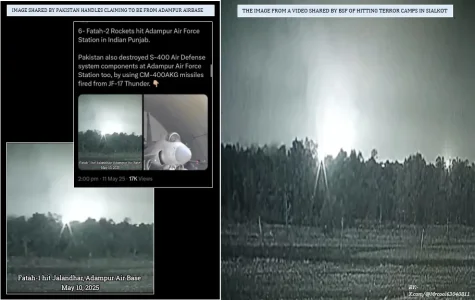Pakistan’s Fake Nuclear Leak and U.S. Intervention
On May 10, the final day of Indian missile strikes, Pakistan claimed a radiation leak at its bombed nuclear site near Kirana Hills.
Was it real? ……Highly unlikely. Most evidence suggests the story was fabricated to draw American sympathy—and it worked.
Alarmed, President Trump dispatched a top-secret U.S. aircraft to detect radiation around the site. It found nothing. No radiation, no leak. Yet the false alarm achieved its goal: Trump immediately called for a halt to hostilities, effectively rescuing Pakistan when its military options had run out.
The truth? Still unclear. But it’s widely believed that Pakistan manufactured the leak narrative to force U.S. involvement and secure a ceasefire. India, having gained the upper hand, was denied a full resolution—outmaneuvered by disinformation.
Three days later, Pakistan issued a vague statement about a minor isotopic leak at a different site. A classic bait-and-switch tactic—something Pakistan has practiced for decades, with America often taking the bait for political convenience.
Trump’s reliance on unverified intelligence not only soured ties with Prime Minister Modi but also damaged U.S.-India relations. His claim of playing a major role in halting the strikes angered New Delhi further.
Should India trust Trump-era advisors again? Unlikely. The rift created can only be repaired by a clear initiative from Washington.










